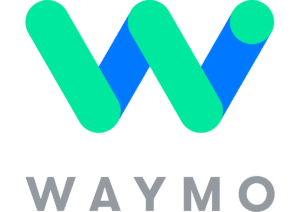A tech-forward city San Francisco, where Waymo’s headquarters located, presents a good case study for other regions to mirror. With a dense urban environment accompanied by a supportive regulatory framework, recent expansions in the South Bay include a 27-square-mile service area covering Mountain View, Los Altos, Palo Alto, and Sunnyvale. As of March, 2025, Waymo’s Silicon Valley expansion system stated that the company is running more than 200,000 trips a week, showing the successful and demanded business model.
The California Department of Motor Vehicles recently approved San Jose for fully autonomously operated vehicles. But Waymo One is not approved to test service by The California Department of Motor Vehicles. Waymo posted on a social media address that the company is working with local officials, emergency responders, and communities to expand robotaxi providing a safe service. This shows that Waymo’s regulatory framework requires collaborations from different institutions within a city. Waymo One allows AV services for public customers using an app, which is currently available in Phoenix, San Francisco, and Los Angeles. In Austin, Texas, Waymo’s robotaxi service is available through a partnership with Uber. Based on the regulatory geographic and economic conditions of each city, Waymo adapts different approaches to find the right model. Waymo One is operated within only limited distances. There are key points for this practice. First for context learning and mapping for humans. Second for safety and controlled testing. Third, focus on scenarios.
Domestic and Global Expansion Plan
It is challenging to foresee how Waymo will standardize operations for East Coast and international markets, as Waymo is planning expansion and testing practices in Atlanta, Miami, Washington DC, and Tokyo, where a strategic testing method, such as primarily mapping, or pre-deployment strategies used from existing market cities.
There are key economic factors that are critical influences for regional selection and the evolution of the business model from the West Coast to the international markets. The infrastructure readiness of a city is important. Cities like Los Angeles and Austin were top priority choices because of the city’s existing tech infrastructure and mapping partnerships. Market demand is another key point. Waymo’s 200,000 weekly rides from Phoenix, San Francisco, Los Angeles, and Austin proved its scalability in urban cities. Lastly, funding and competition support expansions. In October 2024, Waymo closed a $5.6 billion funding round led by Google Alphabet, and other investors, proving that the company’s value increased over $45 billion after this funding. Waymo is leading the industry as No1. on the list of the Most Innovative Companies of 2025, while competitors like Cruise and Tesla go through setbacks.
The current status of preliminary mapping in Washington, D.C., and Tokyo follows pre-deployment methods applied in the current market cities. The current mapping initiative of Tokyo represents Waymo’s significant move towards global scalability. Partnering with local supports such as collaborating with fleet managers and policymakers ensures regulatory compliance and community trust. Cost-benefit analysis of scaling in diverse regions needs to be prepared for the expanding strategy for success.
Economies of scale
Waymo’s successful expansion into different regions would bring significant economic impacts for both local and global stance, such as creating jobs, boosting tourism, and restructuring urban infrastructures.
Waymo generated tons of high-paying jobs, and contributed to economic growth in San francisco. At San Francisco Airport (SFO) alone, Waymo’s operations could raise $88 million. This could exceed $600 million as the operations expand. Also it has boosted tourism in the city, and contributed nearly $40 million in economic earnings, affecting hotels, restaurants, and cityscapes.
Studying San Francisco as a case study will evaluate economic factors in the new locations, and provide feasible resources for global expansion, and long-term viability for regulatory diversity.
Economically identifying cost-effectiveness, consumer behavior, and regulatory compliances in the prospective regions such as Washington, D.C., Miami, and Atlanta would be essential for drawing protocols in new markets.
Case Study: San Francisco
San Francisco model showcases the importance of regulatory alignment and infrastructure readiness. San Francisco is a tech-forward city and has unique geographic conditions such as a dense downtown area, and steep hills. The mix of new and old infrastructure, for example, the integration with Caltrain stations and tech hubs such as Google’s headquarters ensures accessibility to customers. Gradual service rollouts such as Zip code-based South Bay expansion mitigate public and regulatory concerns.
Learning from San Francisco’s practices will help navigating D.C.’s regulatory environment and may set precedents for East Coast and international markets. Waymo’s expansion strategy for future regional markets would balance technological innovation and economic growth.

